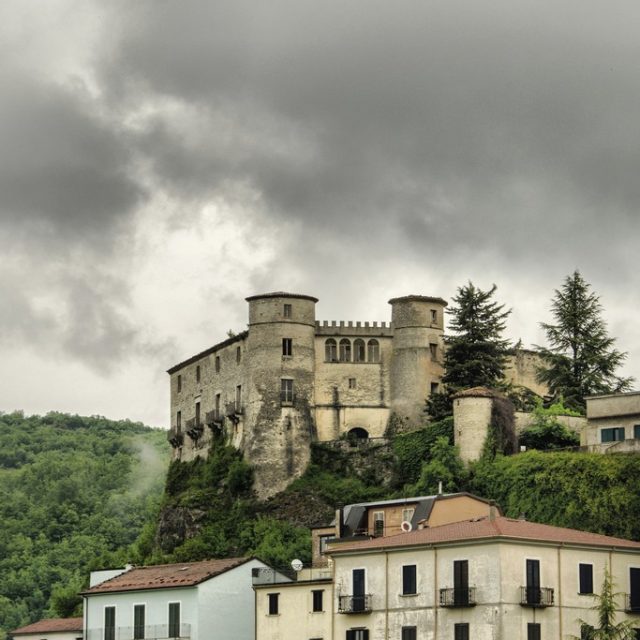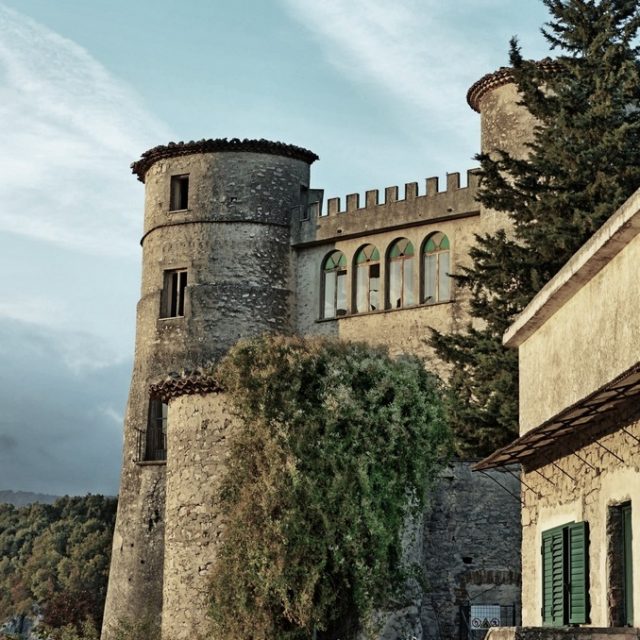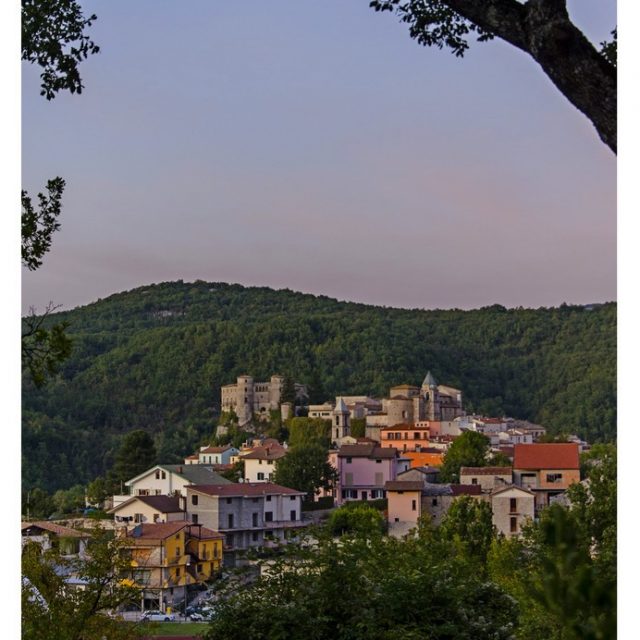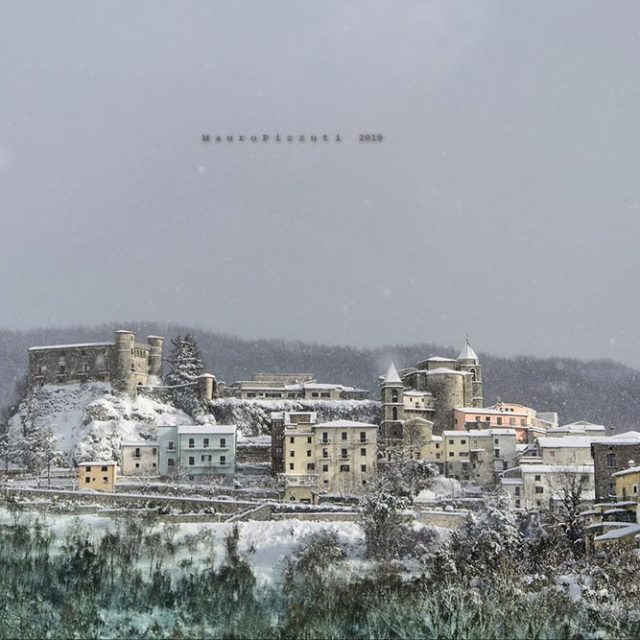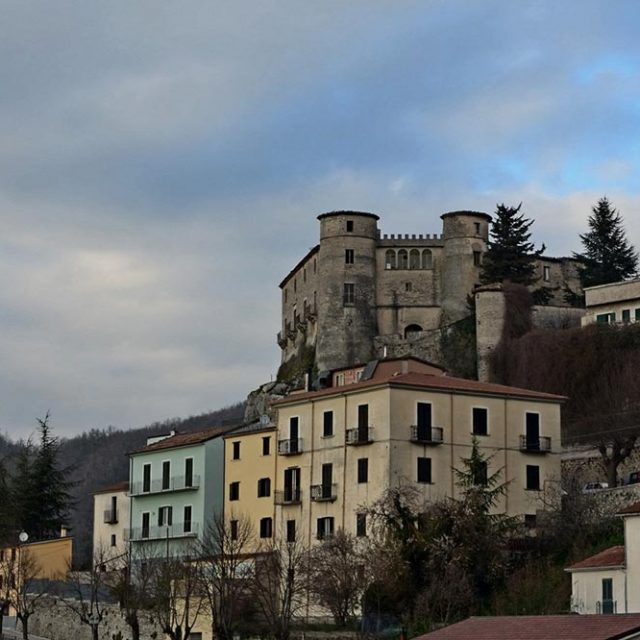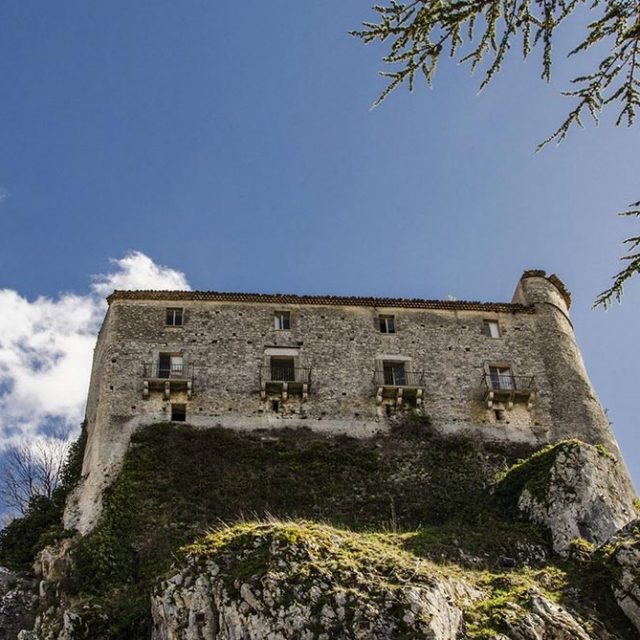Carpinone’s castle was probably built during the Norman period. Since then and until the end of the XIII century, the fortress was expanded over and over again, equipping it with more fortification. It also became one of Tommaso da Celano’s strongholds. On the basis of a decree issued by Federico II of Svevia, the castle was destroyed in 1223 by Ruggiero da Pescolanciano. During the XIV century, the castle was rebuilt again by the Evoli’s but only during the XV century it returned to its former splendor thanks to Giacomo Caldora’s commitment.
The De Riso’s were the last family who bought the fief and they kept it until the abolition of feudalism (1806). In 1954, one of the last owners, a notary whose last name was Valente, restored the first and second floor of the castle, making them suitable for the new housing needs.
Nowdays, the fortress, with its three remaining towers, is still majestic.
It has a pentagonal shape and it is surrounded by five towers. Carpinone’s castle stands sheer on a mighty rock and represents one of the most evocative fortifications in the Molise’s castle landscape.
Inside – where there were the stables, the warehouses, the guards’ accomodations and the jails – we can also find the courtyard of the ground floor. The first floor consisted of reception rooms -made comfortable by Giacomo and Antonio Caldora in order to receive famous politicians of the time – and the family chapel. The bedrooms and the services were on the second floor.
Finally, according to the historian Faraglia (and his work “The story of the battle between Alfondo d’Aragona e Renato D’Angiò”), it is probable that someone hid the famous Caldora’s treasure in the castle. It consisted of a huge amount of coins but also very precious jewelry. By an historical point of view, the entire old quarter is interesting. It has a double order of wall fortifications built in different periods and ways.
Both of them has a U-shaped perimeter because the north face of the rock is totally inaccessible. The first order embraces and protects the castle and few houses (an area called “the Citadel”). The second order develops further down, in the area bordering the expansion which dates back to the late nineteenth century. The village develops between the two orders of walls.
Situated in the upper part of the village, nearby the medieval castle, there is the church dedicated to St. Maria Assunta (restored for the first time in the 1795 and then in the 1962) which is characterized by a very simple architectural style.
It treasures some baroque furnishings and it is the house of the embalmed body of St. Rocco Celestino which is kept in a bronze urn and carried in procession every ten years.
The Church of St. Maria di Loreto is also an unmissable destination.
It was built in 1610 by Biagio Martella on the site of an homonymous ancient chapel (registered in an inventory of the 1356) after he dreamed about the location of a treasure.
It only has a nave (built in the 1617) where the main altar is located, surmounted by a sculpture of the Virgin and the effigy of the Martella’s.
The carved ceiling is turquoise while the walls are golden.
Even if the decorative furnishings is almost totally destroyed, the church treasures a wonderful silver crucifix realized (according to the seals) in Naples in the 1773.
In addition to that, to the West of the village, there is the Saints’ Mountain (Monte dei santi) with its characteristic round shape. It gained this name because inside there are buried a lot of Christians escaped from the Diocletian’s persecutions. They hid in the catacombs dug under the Mountain which were expanded with others channels.
fonte: www.regione.molise.it/
foto: Mauro Pizzuti


